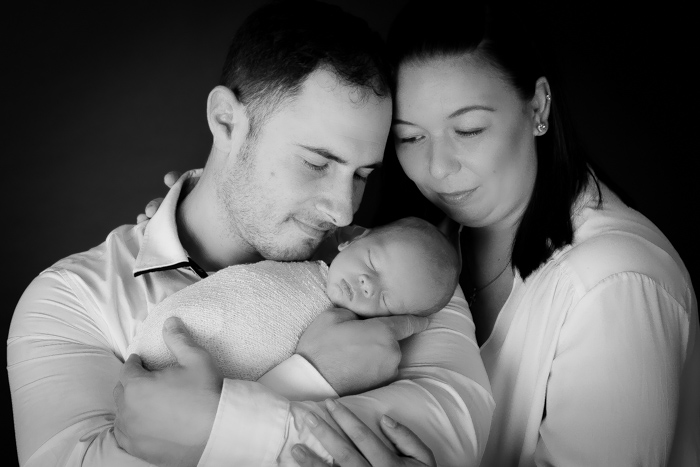“Photography is a way of feeling, of touching, of loving.”
There are many different areas of photography to choose from. The photographs from a family portrait session are nothing short of cherished treasures for their work. As such, it’s not unusual for photographers to feel daunted under the big responsibility of ensuring the perfect family photoshoot.
But is having the right mix of aesthetics and technicality really that tough? Well, not really. And that’s because we’re here with a guide to the top 10 tips for going about your first family portrait session.
So, let’s begin, shall we?
10 Tips For Doing Your First Family Portrait Session


1. Plan Their Activities
The best family portraits are the ones that capture the candid moments of the members having fun. It may so happen that you find a family which is fairly experienced in photoshoots and likes posing in front of the camera.
However, posing doesn’t come naturally to a lot of people. Hence, some (if not all) of the family members might feel awkward or uncomfortable facing the camera, making the photograph look unnatural.
To make your clients more comfortable, it’s better to plan what they can do instead of ordering them to strike a particular pose or stand in a specific spot. For instance, you can organize various activities like walking, running, dancing, playing hide-and-seek behind trees or other such games.
Not only will this aid a natural and happy setting, but it will also remind the family of the great times spent together. However, in doing so, make sure that they aren’t facing the sun or any strong light source. Although you may think this will ensure more brightness, the photographs will end up having unflattering shadows, especially under the eyebrows, nose, and neck.
Besides, with the sun shining bright, your clients will either close or squint their eyes, which is not something you’d want in the photos.
If you have some poses in mind, demonstrate them and make them practice before clicking the picture. Furthermore, use reference objects for providing directions. For example, instead of saying “move left”, ask them to “move near the small tree” or “towards the bench.” This is because your clients may not understand if you’re talking about their left or yours.
When photographing babies or children, you’d want to get down to their eye level, as this will result in more engaging photographs. Moreover, it will help you interact with them and make them feel more comfortable.
2. Take Into Account The Surroundings
Capturing the perfect moment takes much more than just having the correct camera settings (which we will discuss in the later sections). While you’d obviously want to use the surroundings for a good frame or setting, you wouldn’t want them to disrupt the photoshoot.
For instance, if you’re shooting on a beach, you wouldn’t ask your subjects to stand in an area where they can get drenched by a sudden wave. Or, if you’re in a park, you can’t tell them to move backwards without checking if they would collide with a tree or bench. Hence, it’s important to be aware of the surroundings beforehand to avoid any mishap or inconvenience.
3. Provide Outfit Advice
One of the most common queries that clients have before a family portrait session is regarding the kind of outfit they should wear. Naturally, you’d want them to look elegant and coordinated, which conveys a feeling of togetherness.
But this doesn’t mean that the members have to wear identical clothes for the purpose of “twinning.” The idea is to make them wear the same style of clothes, generally casual and of the same colour or shade. We’d advise asking your clients to avoid bright or loud colours and opt for natural shades instead.
If anyone or two members are wearing a bright shade, they will automatically become the “focal point” or point of attention (unless that’s how you want the picture to be). Likewise, apparels with big illustrations should be avoided unless they add some value to the composition.
4. Use The Centre AF Point To Focus
Although different photographers use different focus settings, the centre AF (autofocus) point to focus mode works best for family portraits. Depending on the type of DSLR camera being used, you may get some of the following AF area modes or AF points:
a) Single Point
In this mode, you can manually decide on a single AF point, and the camera will focus on the subject within that point. This setting works best for stationary subjects.
b) Dynamic Area
Like the above-mentioned mode, you start by manually choosing an AF point. And in case the subject moves or moves outside the selected AF point area, the camera will automatically adjust the focus according to the surrounding AF points. This mode will come in handy for photographing toddlers or children.
c) Auto
The auto mode automatically determines the AF point that contains the subject and focuses on it.
d) AF Point Expansion
As the name suggests, this setting allows you to select the central AF point, surrounded by an additional 4 or 8 AF points. The latter points are for moving subjects that don’t offer much contrast for focus acquisition.
e) Zone AF
The zone AF mode has a cluster of 9 or 12 moveable AF points for the camera to achieve focus on the nearest subject within the selected zone.
f) Auto AF Point Selection
This mode activates all the AF points to track focus, in case the photographer recomposes the scene after the shutter-release button is partially depressed.
5. Choose The Right Aperture
It’s a well-known fact that aperture forms one of the most crucial components of the exposure triangle (ISO and shutter speed, being the other two). Getting the aperture wrong can cause the photograph to be too dark or too light. Much like the focus setting, the aperture setting will depend on the particular style of photography.
Many lifestyle photographs, as a starting point, prefer to shoot wide open for individual portraits. Something like an f/2.2 will work really well if you’re looking to create a beautiful bokeh background. Similarly, an f-stop near f/5.6 is suitable for group shots to ensure that everyone is in sharp focus.
To give you a better idea, we’d say that the best aperture setting for individual portraits is between f/2 and f/2.8 and f/4 for two people. For a family of three or more, start shooting at f/5.6 or higher. Of course, there are other parameters to consider, but with these f-stops in hand, you can’t possibly go wrong!
If you have to make your clients stand in rows and get three of them (which is pretty rare), you may even go for something as small an aperture like f/8.
7. Choose A Fast Shutter Speed
Since children and toddlers move fast, and most of the times unpredictably, a faster shutter speed will help you shoot sharp photos. One tip that mostly works for beginner family portrait photographers is keeping the shutter speed at least double of the focal length. So, if the focal length of your lens is 70mm, the shutter speed can be somewhere around 1/200 or 1/400.
Otherwise, you may start with 1/250, which will also deliver sharp images if the children are rolling over the ground or waving to their parents in the distance. Likewise, if there is a faster activity like jumping or racing, select a faster shutter speed like 1/800. As your skill develops, you will be able to click sharp images even at slower shutter speeds with a steady hand.
8. Set The ISO To Auto
The last critical aspect of the exposure triangle is the ISO, and while you’re getting the hang of the other two, it’s best to choose the auto ISO setting. This will give you good results without you having to worry about getting “grainy” or “chunky” appearing photographs.
Again, with experience, you will gradually learn to set the right ISO value for different situations. For example, if you’re shooting indoors with low light but with fast action (like running), you may increase the ISO value to get more light. In this regard, the normal ISO range is from 200 to 1,600, while some digital cameras allow you to set a lower value of around 50.
9. Use Auto White Balance
Simply put, the role of white balance is to make the colours in your photograph as accurate as possible. Accordingly, photographers adjust white balance because different light sources have different “colour temperatures”, which in turn affect the colours in the final image.
For instance, fluorescent lights render a bluish hue to the photographs, while tungsten bulbs add a golden or yellowish tinge. As such, the different temperatures range from the very cool light of a blue, clear sky to the warm glow of a candle.
When working with different scenes, especially in outdoor family portrait sessions, you won’t really have a lot of time to adjust the white balance according to the changing lighting. Furthermore, changing the white balance to get the right colour while editing the photographs is a significantly easy affair.
9. Select The Right Metering Mode
A great way to ensure the perfect exposure for a scene or frame is by choosing the right metering mode. As you may know, there are four main types of metering modes that your camera uses, namely, evaluative, centre-weighted, partial, and spot.
Generally, if you’re about to capture a candid moment and don’t have a lot of time, you can use spot metering for individual portraits and evaluative (or matrix) metering for group shots.
However, do keep in mind that very bright and dark tones can confuse the light meter on your camera. This is because it’s practically designed to bring every colour tone to “18% grey.” And although it may correct the tone, the colours may appear unnatural in the final images. Hence, it becomes important for you to decide if the said metering mode is suitable for the scene or not.
10. Choose The Right Lens
Unless you have the right lens for the purpose, even the best settings won’t help you snap the perfect photograph. This doesn’t mean that you can carry only a lens to complete the entire portrait session. Not only will carrying different lenses help you create varied compositions, but it will also ensure that you’re equipped to shoot in different locations.
For example, a zoom lens like 24-70mm offers great flexibility, while the 85mm prime lens is popular for portrait shoots. On the other hand, a 35mm prime wide lens will help set the scene. If you don’t have all the lenses, consider renting them but don’t compromise on quality. The versatility of the different focal lengths will be worth the investment.
No matter the type of lens you choose, always avoid lens flare (when the sun is hitting the lens directly, and you see a haze over the image on the LCD screen). Make sufficient adjustments as lens flare will invariably interfere with the focus.
We’d strongly suggest getting lens hoods, as you may not have a lot of space to adjust it at the shoot.
It’s Time For Your First Family Portrait!


On that note, it’s time for us to wrap up our guide for the day.
Like any other skill, photography also requires a ton of practice. And only with experience can you get the right idea of the appropriate values and settings.
But when it’s finally time for your big day, keep yourself and your clients relaxed. Strike a conversation while setting everything up to ease the nerves. After all, nothing ensures a successful portrait session like a friendly attitude combined with professional and careful preparation.
We will see you soon. Till then, good luck!

